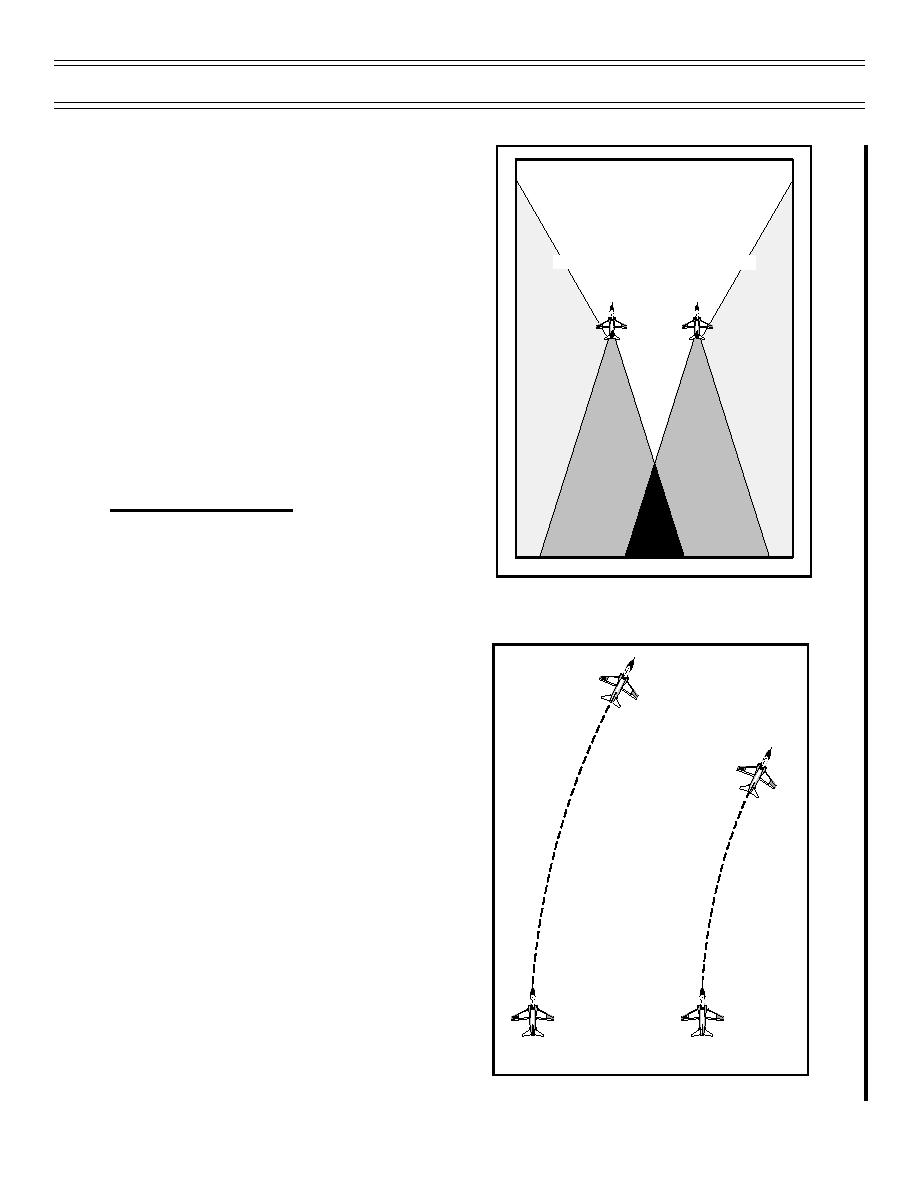
Operational Navigation Flight Training Instruction
Two-Plane Road Reconnaissance
uncomfortably close in range to the section's
six o'clock position, the threat may be in weapons
parameters before detection is possible. In the
Training Command, threat reaction is not executed.
On the road recce solo hop, there will be a chase
aircraft that will be considered a bandit. When off
30
30
target or enroute, the bandit/chase pilot will test the
lookout doctrine of the section and will expect
Wingman
Lead
appropriate bandit calls from the section. An
Primary
Wingman's
Lead's
example: "Vinny, bandit right five, one mile" the
Secondary
Secondary
chase pilot will evaluate the call and distance to help
calibrate the student's eyes. Be sure you have
cleared your wingman's six visually (i.e., not just a
COMM call) or the next thing you may hear is a
Blind
Blind
tracking call or "Fox-2" out of the bandit. Obviously,
Cone
Cone
letting your wingman get shot will result in a serious
degradation of mutual support!
SECTION MANEUVERING
Section maneuvering is done through utilizing the
skills learned in the TACF stage. These maneuvers
are cooperative in nature and both wingmen are
responsible for recognizing how they can help each
other to regain position. This requires the
Figure 6: LOOKOUT DOCTRINE RESPONSIBILITIES
development of situational awareness of closure,
track crossing angle, and track crossing rates. The
maneuvers used are based upon the number of
degrees required to turn the section. There are no
hard and fast rules dictating the type of turn you
should call; however, the following descriptions
should serve as a guideline to your decision.
CHECK TURN
Used to maneuver the section from 0 to 30 degrees,
at times the lead may check turn without calling the
turn and it is up to the wingman to analyze the lead's
aspect and continue to maneuver to maintain good
combat spread. In road recce, the check turn is
useful when there is not enough time to bracket a
target laterally off the route with a shackle.
(Figure 7)
Lead
Wingman
Figure 7: CHECK TURN
(7-99) Original
Page 25


 Previous Page
Previous Page
